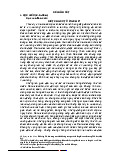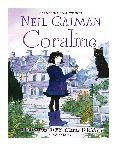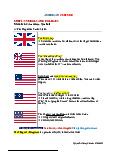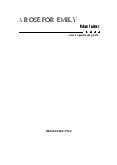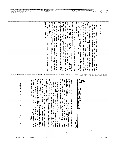









Preview text:
EAlvice eWalkreryday + U
The mama: aesthetic, meticulous and attached to the practice of everyday life. + Maggie the daughter: shy s
, unconfident and having a mixture of admiration with jealousy w e
I will wait for her in the yard that Maggie and I made so clean and wavy
yesterday afternoon. A yard like this is more comfortable than most people
know. It is not just a yard. It is like an extended living room. When the hard What qualities do you
clay is swept clean as a floor and the fine sand around the edges lined with tiny, associate with the
irregular grooves, anyone can come and sit and look up into the elm tree and woman in the painting?
wait for the breezes that never come inside the house. How closely does she
Maggie will be nervous until after her sister goes: she will stand hopelessly in match the story’s
corners, homely and ashamed of the burn scars down her arms and legs, eying her narrator?
sister with a mixture of envy and awe. She thinks her sister has held life always in
10 the palm of one hand, that “no” is a word the world never learned to say to her. a
a MAKE INFERENCES Reread lines 7–10. What
You’ve no doubt seen those TV shows where the child who has “made it” is can you infer about
confronted, as a surprise, by her own mother and father, tottering in weakly Maggie and her sister from this description?
from backstage. (A pleasant surprise, of course: What would they do if parent Which details led to
and child came on the show only to curse out and insult each other?) On TV your inference?
mother and child embrace and smile into each other’s faces. Sometimes the
mother and father weep, the child wraps them in her arms and leans across the
table to tell how she would not have made it without their help. I have seen these programs.
Sometimes I dream a dream in which Dee and I are suddenly brought
20 together on a TV program of this sort. Out of a dark and soft-seated limousine
I am ushered into a bright room filled with many people. There I meet a
smiling, gray, sporty man like Johnny Carson who shakes my hand and tells
me what a fine girl I have. Then we are on the stage and Dee is embracing me
with tears in her eyes. She pins on my dress a large orchid, even though she has
told me once that she thinks orchids are tacky flowers.
In real life I am a large, big-boned woman with rough, man-working hands.
In the winter I wear flannel nightgowns to bed and overalls during the day. I
can kill and clean a hog as mercilessly as a man. My fat keeps me hot in zero
weather. I can work outside all day, breaking ice to get water for washing; I can Home Chores (1945), Jacob Lawrence.
30 eat pork liver cooked over the open fire minutes after it comes steaming from
Gouache and graphite on paper, 291/2˝ × 211/
the hog. One winter I knocked a bull calf straight in the brain between the 16˝. Anonymous gift. The
Nelson-Atkins Museum of Art, Kansas
City, Missouri. F69-6. Photo by Jamison
Miller © 2008 The Jacob and Gwendolyn
Lawrence Foundation, Seattle/Artists 50
unit 1: plot, setting, and mood
Rights Society (ARS), New York.
eyes with a sledge hammer and had the meat hung up to chill before nightfall.
But of course all this does not show on television. I am the way my daughter
would want me to be: a hundred pounds lighter, my skin like an uncooked
barley pancake. My hair glistens in the hot bright lights. Johnny Carson has
much to do to keep up with my quick and witty tongue.
But that is a mistake. I know even before I wake up. Who ever knew a
Johnson with a quick tongue? Who can even imagine me looking a strange
white man in the eye? It seems to me I have talked to them always with one
40 foot raised in flight, with my head turned in whichever way is farthest from
them. Dee, though. She would always look anyone in the eye. Hesitation was
no part of her nature. b
b MAKE INFERENCES What do you infer
“How do I look, Mama?” Maggie says, showing just enough of her thin body about Mama from her description of herself?
enveloped in pink skirt and red blouse for me to know she’s there, almost Cite specific details. hidden by the door.
Little Sweet (1944), William H. Johnson. Oil on paperboard, 28˝ × 22˝. Smithsonian
American Art Museum, Washington, D.C. Photo © Smithsonian American Art
Museum, Washington, D.C./Art Resource, New York. 52
unit 1: plot, setting, and mood
“Come out into the yard,” I say.
Have you ever seen a lame animal, perhaps a dog run over by some careless
person rich enough to own a car, sidle up to someone who is ignorant enough
to be kind to him? That is the way my Maggie walks. She has been like this,
50 chin on chest, eyes on ground, feet in shuffle, ever since the fire that burned the other house to the ground.
Dee is lighter than Maggie, with nicer hair and a fuller figure. She’s a
woman now, though sometimes I forget. How long ago was it that the other
house burned? Ten, twelve years? Sometimes I can still hear the flames and feel RL 4
Maggie’s arms sticking to me, her hair smoking and her dress falling off her
in little black papery flakes. Her eyes seemed stretched open, blazed open by
the flames reflected in them. And Dee. I see her standing off under the sweet Informal language Reread the paragraph
gum tree she used to dig gum out of; a look of concentration on her face as she that begins with line 52.
watched the last dingy gray board of the house fall in toward the red-hot brick Walker uses sentence
60 chimney. Why don’t you do a dance around the ashes? I’d wanted to ask her. fragments such as “Ten,
She had hated the house that much. twelve years?” and
I used to think she hated Maggie, too. But that was before we raised the “And Dee.” to create an informal tone. What
money, the church and me, to send her to Augusta1 to school. She used to read other fragments do you
to us without pity; forcing words, lies, other folks’ habits, whole lives upon us see on this page? [Hint:
two, sitting trapped and ignorant underneath her voice. She washed us in a look for sentences that
river of make-believe, burned us with a lot of knowledge we didn’t necessarily lack either a subject or a verb.]
need to know. Pressed us to her with the serious way she read, to shove us away
at just the moment, like dimwits, we seemed about to understand.
Dee wanted nice things. A yellow organdy dress to wear to her graduation
70 from high school; black pumps to match a green suit she’d made from an old
suit somebody gave me. She was determined to stare down any disaster in her
efforts. Her eyelids would not flicker for minutes at a time. Often I fought off
the temptation to shake her. At sixteen she had a style of her own: and knew what style was. c c CONFLICT Reread lines 52–74. What
I never had an education myself. After second grade the school was closed conflicts exist between
down. Don’t ask me why: in 1927 colored asked fewer questions than they Dee and her mother and sister?
do now. Sometimes Maggie reads to me. She stumbles along good-naturedly
but can’t see well. She knows she is not bright. Like good looks and money,
quickness passed her by. She will marry John Thomas (who has mossy teeth
80 in an earnest face) and then I’ll be free to sit here and I guess just sing church
songs to myself. Although I never was a good singer. Never could carry a tune.
I was always better at a man’s job. I used to love to milk till I was hooked in
the side in ’49. Cows are soothing and slow and don’t bother you, unless you
try to milk them the wrong way.
I have deliberately turned my back on the house. It is three rooms, just like
the one that burned, except the roof is tin; they don’t make shingle roofs any
more. There are no real windows, just some holes cut in the sides, like the
portholes in a ship, but not round and not square, with rawhide holding the
Augusta: a city in Georgia. everyday use 53
shutters up on the outside. This house is in a pasture, too, like the other one.
90 No doubt when Dee sees it she will want to tear it down. She wrote me once
that no matter where we “choose” to live, she will manage to come see us. But
she will never bring her friends. Maggie and I thought about this and Maggie
asked me, “Mama, when did Dee ever have any friends?” She had a few.
boys in pink shirts hanging about on washday after furtive
school. Nervous girls who never laughed. Impressed with her they worshiped sneaky, secretive
the well-turned phrase, the cute shape, the scalding humor that erupted like
bubbles in lye. She read to them. recompose to restore to calm, to
When she was courting Jimmy T she didn’t have much time to pay to us, but settle again
turned all her faultfinding power on him. He fle
w to marry a cheap city girl from
100 a family of ignorant flashy people. She hardly had time to herself. d
d MAKE INFERENCES What do you learn about
When she comes I will meet—but there they are! Dee from the way others
Maggie attempts to make a dash for the house, in her shuffling way, but I respond to her?
stay her with my hand. “Come back here,” I say. And she stops and tries to dig
a well in the sand with her toe.
It is hard to see them clearly through the strong sun. But even the first
glimpse of leg out of the car tells me it is Dee. Her feet were always neat-
looking, as if God himself had shaped them with a certain style. From the
other side of the car comes a short, stocky man. Hair is all over his head a foot
long and hanging from his chin like a kinky mule tail. I hear Maggie suck in
110 her breath. “Uhnnnh,” is what it sounds like. Like when you see the wriggling
end of a snake just in front of your foot on the road. “Uhnnnh.”
Dee next. A dress down to the ground, in this hot weather. A dress so loud RL 4
it hurts my eyes. There are yellows and oranges enough to throw back the light e
of the sun. I feel my whole face warming from the heat waves it throws out. FIGURATIVE LANGUAGE
Earrings gold, too, and hanging down to her shoulders. Bracelets dangling and Figurative language
making noises when she moves her arm up to shake the folds of the dress out is language that
of her armpits. The dress is loose and flows, and as she walks closer, I like it. communicates meanings beyond the
I hear Maggie go “Uhnnnh” again. It is her sister’s hair. It stands straight up literal meanings of the
like the wool on a sheep. It is black as night and around the edges are two long words. Reread Mama’s
120 pigtails that rope about like small lizards disappearing behind her ears. e description of Dee’s hair,
“Wa-su-zo-Tean-o!” she says, coming on in that gliding way the dress makes which begins on line 118. Obviously, Dee’s hair
her move. The short stocky fellow with the hair to his navel is all grinning does not literal y move
and he follows up with “Asalamalakim,2 my mother and sister!” He moves to like lizards. Here and
hug Maggie but she falls back, right up against the back of my chair. I feel her in other places, Mama
trembling there and when I look up I see the perspiration falling off her chin. evokes images from her
“Don’t get up,” says Dee. Since I am stout it takes something of a push. life spent on a farm. Her figurative language often
You can see me trying to move a second or two before I make it. She turns, reflects the historical
showing white heels through her sandals, and goes back to the car. Out she and cultural setting of
peeks next with a Polaroid. She stoops down quickly and lines up picture after the story. What other examples of figurative
130 picture of me sitting there in front of the house with Maggie cowering behind language can you find?
me. She never takes a shot without making sure the house is included. When Wa-su-zo-Tean-o! . . . Asalamalakim!
: African and Arabic greetings. 54
unit 1: plot, setting, and mood Contrast the style and subject of this painting with those of the one on page 52. Does the contrast reflect the differences between the sisters in the story? Explain.
Portrait of a woman with golden
headscarf (1900s), Attributed to
Lo Babacar. Pikine, Senegal. Glass
painting. Inv.:A.94.4.33 Musée
des Arts d’Afrique et d’Oceanie, Paris. Photo © Arnaudet/
Réunion des Musées Nationaux/ Art Resource, New York.
a cow comes nibbling around the edge of the yard she snaps it and me and
Maggie and the house. Then she puts the Polaroid in the back seat of the car,
and comes up and kisses me on the forehead. f f GRAMMAR AND STYLE
Meanwhile Asalamalakim is going through motions with Maggie’s hand. Reread lines 131–134.
Maggie’s hand is as limp as a fish, and probably as cold, despite the sweat, and Notice how Walker
she keeps trying to pull it back. It looks like Asalamalakim wants to shake adds descriptive details through the use of
hands but wants to do it fancy. Or maybe he don’t know how people shake prepositional phrases
hands. Anyhow, he soon gives up on Maggie. such as “around the edge 140 “Well,” I say. “Dee.”
of the yard,” “in the back
“No, Mama,” she says. “Not ‘Dee,’ Wangero Leewanika Kemanjo!”3 seat of the car,” and “on the forehead.”
“What happened to ‘Dee’?” I wanted to know.
“She’s dead,” Wangero said. “I couldn’t bear it any longer, being named after the people who oppress me.”
“You know as well as me you was named after your aunt Dicie,” I said. Dicie
is my sister. She named Dee. We called her “Big Dee” after Dee was born.
“But who was she named after?” asked Wangero.
“I guess after Grandma Dee,” I said.
“And who was she named after?” asked Wangero.
Wangero Leewanika Kemanjo . everyday use 55 150
“Her mother,” I said, and saw Wangero was getting tired. “That’s about as
far back as I can trace it,” I said. Though, in fact, I probably could have carried
it back beyond the Civil War through the branches. g g CONFLICT
“Well,” said Asalamalakim, “there you are.” What is causing tension
“Uhnnnh,” I heard Maggie say. between Dee and Mama?
“There I was not,” I said, “before ‘Dicie’ cropped up in our family, so why
should I try to trace it that far back?”
He just stood there grinning, looking down on me like somebody inspecting
a Model A4 car. Every once in a while he and Wangero sent eye signals over my head. 160
“How do you pronounce this name?” I asked.
“You don’t have to call me by it if you don’t want to,” said Wangero.
“Why shouldn’t I?” I asked. “If that’s what you want us to call you, we’ll call you.”
“I know it might sound awkward at first,” said Wangero.
“I’ll get used to it,” I said. “Ream it out again.”
Well, soon we got the name out of the way. Asalamalakim had a name twice
as long and three times as hard. After I tripped over it two or three times he
told me to just call him Hakim-a-barber.5 I wanted to ask him was he a barber,
but I didn’t really think he was, so I didn’t ask. 170
“You must belong to those beef-cattle peoples down the road,” I said. They
said “Asalamalakim” when they met you, too, but they didn’t shake hands.
Always too busy: feeding the cattle, fixing the fences, putting up salt-lick
shelters, throwing down hay. When the white folks poisoned some of the herd
the men stayed up all night with rifles in their hands. I walked a mile and a half just to see the sight.
Hakim-a-barber said, “I accept some of their but farming and doctrine a set
raising cattle is not my style.” (They didn’t tell me, and I didn’t ask, whether of rules, beliefs, or values
Wangero (Dee) had really gone and married him.) held by a group
We sat down to eat and right away he said he didn’t eat collards and pork
180 was unclean. Wangero, though, went on through the chitlins and corn bread,
the greens and everything else. She talked a blue streak over the sweet potatoes.
Everything delighted her. Even the fact that we still used the benches her
daddy made for the table when we couldn’t afford to buy chairs.
“Oh, Mama!” she cried. Then turned to Hakim-a-barber. “I never knew
how lovely these benches are. You can feel the rump prints,” she said, running
her hands underneath her and along the bench. Then she gave a sigh and her
hand closed over Grandma Dee’s butter dish. “That’s it!” she said. “I knew
there was something I wanted to ask you if I could have.” She jumped up from
the table and went over in the corner where the churn stood, the milk in it
190 clabber6 by now. She looked at the churn and looked at it.
Model A: an automobile manufactured by Ford from 1927 to 1931. Hakim-a-barber . clabber: curdled milk. 56
unit 1: plot, setting, and mood
“This churn top is what I need,” she said. “Didn’t Uncle Buddy whittle it
out of a tree you all used to have?” “Yes,” I said.
“Uh huh,” she said happily. “And I want the dasher,7 too.”
“Uncle Buddy whittle that, too?” asked the barber. Dee (Wangero) looked up at me.
“Aunt Dee’s first husband whittled the dash,” said Maggie so low you almost
couldn’t hear her. “His name was Henry, but they called him Stash.”
“Maggie’s brain is like an elephant’s,” Wangero said, laughing. “I can use the
200 churn top as a centerpiece for the alcove table,” she said, sliding a plate over
the churn, “and I’ll think of something artistic to do with the dasher.” h h
When she finished wrapping the dasher the handle stuck out. I took it for MAKE INFERENCES Reread lines 191–201.
a moment in my hands. You didn’t even have to look close to see where hands What do you learn about
pushing the dasher up and down to make butter had left a kind of sink in the Dee and Maggie in these lines?
wood. In fact, there were a lot of small sinks; you could see where thumbs and
fingers had sunk into the wood. It was beautiful light yellow wood, from a tree
that grew in the yard where Big Dee and Stash had lived.
After dinner Dee (Wangero) went to the trunk at the foot of my bed and
started rifling through it. Maggie hung back in the kitchen over the dishpan.
210 Out came Wangero with two quilts. They had been pieced by Grandma Dee
and then Big Dee and me had hung them on the quilt frames on the front
porch and quilted them. One was in the Lone Star pattern. The other was
Walk Around the Mountain. In both of them were scraps of dresses Grandma
Dee had worn fifty and more years ago. Bits and pieces of Grandpa Jarrell’s
Paisley shirts. And one teeny faded blue piece, about the size of a penny
matchbox, that was from Great Grandpa Ezra’s uniform that he wore in the Civil War.
“Mama,” Wangero said sweet as a bird. “Can I have these old quilts?”
I heard something fall in the kitchen, and a minute later the kitchen door 220 slammed. i i
“Why don’t you take one or two of the others?” I asked. “These old things MAKE INFERENCES What might these noises
was just done by me and Big Dee from some tops your grandma pieced before mean? she died.”
“No,” said Wangero. “I don’t want those. They are stitched around the borders by machine.”
“That’ll make them last better,” I said.
“That’s not the point,” said Wangero. “These are all pieces of dresses
Grandma used to wear. She did all this stitching by hand. Imagine!” She held
the quilts securely in her arms, stroking them. 230
“Some of the pieces, like those lavender ones, come from old clothes her
mother handed down to her,” I said, moving up to touch the quilts. Dee
(Wangero) moved back just enough so that I couldn’t reach the quilts. They already belonged to her.
“Imagine!” she breathed again, clutching them closely to her bosom.
dasher: the plunger of a churn, a device formerly used to stir cream or milk to produce butter. everyday use 57
Crazy Quilt (1883-1893), Victoriene Parsons Mitchell. Textile. 195.6 cm x 163.2 cm. © Indianapolis Museum of Art/ Bridgeman Art Library.
“The truth is,” I said, “I promised to give them quilts to Maggie, for when she marries John Thomas.”
She gasped like a bee had stung her.
“Maggie can’t appreciate these quilts!” she said. “She’d probably be backward
enough to put them to everyday use.” 240
“I reckon she would,” I said. “God knows I been saving ’em for long enough
with nobody using ’em. I hope she will!” I didn’t want to bring up how I had
offered Dee (Wangero) a quilt when she went away to college. Then she had
told me they were old-fashioned, out of style. 58
unit 1: plot, setting, and mood
“But they’re priceless!” she was saying now, furiously; for she has a temper.
“Maggie would put them on the bed and in five years they’d be in rags. Less than that!”
“She can always make some more,” I said. “Maggie knows how to quilt.”
Dee (Wangero) looked at me with hatred. “You just will not understand.
The point is these quilts, these quilts!” 250
“Well,” I said, stumped. “What would you do with them?”
“Hang them,” she said. As if that was the only thing you could do with quilts. j j CONFLICT
Maggie by now was standing in the door. I could almost hear the sound her Reread lines 238–252. Why
feet made as they scraped over each other. doesn’t Dee want Maggie to have the quilts?
“She can have them, Mama,” she said, like somebody used to never winning
anything, or having anything reserved for her. “I can ’member Grandma Dee without the quilts.”
I looked at her hard. She had filled her bottom lip with checkerberry snuff
and it gave her face a kind of dopey, hangdog look. It was Grandma Dee and
260 Big Dee who taught her how to quilt herself. She stood there with her scarred
hands hidden in the folds of her skirt. She looked at her sister with something
like fear but she wasn’t mad at her. This was Maggie’s portion. This was the way she knew God to work.
When I looked at her like that something hit me in the top of my head and
ran down to the soles of my feet. Just like when I’m in church and the spirit of
God touches me and I get happy and shout. I did something I never had done
before: hugged Maggie to me, then dragged her on into the room, snatched
the quilts out of Miss Wangero’s hands and dumped them into Maggie’s lap.
Maggie just sat there on my bed with her mouth open. k k PLOT 270
“Take one or two of the others,” I said to Dee.
This point is the climax
But she turned without a word and went out to Hakim-a-barber. of the story. How is the main conflict resolved?
“You just don’t understand,” she said, as Maggie and I came out to the car.
“What don’t I understand?” I wanted to know. heritage “Your
” she said. And then she turned to Maggie, kissed her, and something passed down
said, “You ought to try to make something of yourself, too, Maggie. It’s really a through generations,
new day for us. But from the way you and Mama still live you’d never such as tradition, values, property know it.” l
She put on some sunglasses that hide everything above the tip of her nose l CONFLICT and her chin. How does Dee view her mother and sister? 280
Maggie smiled; maybe at the sunglasses. But a real smile, not scared. After
we watched the car dust settle I asked Maggie to bring me a dip of snuff. And
then the two of us sat there just enjoying, until it was time to go in the house and go to bed. everyday use 59
